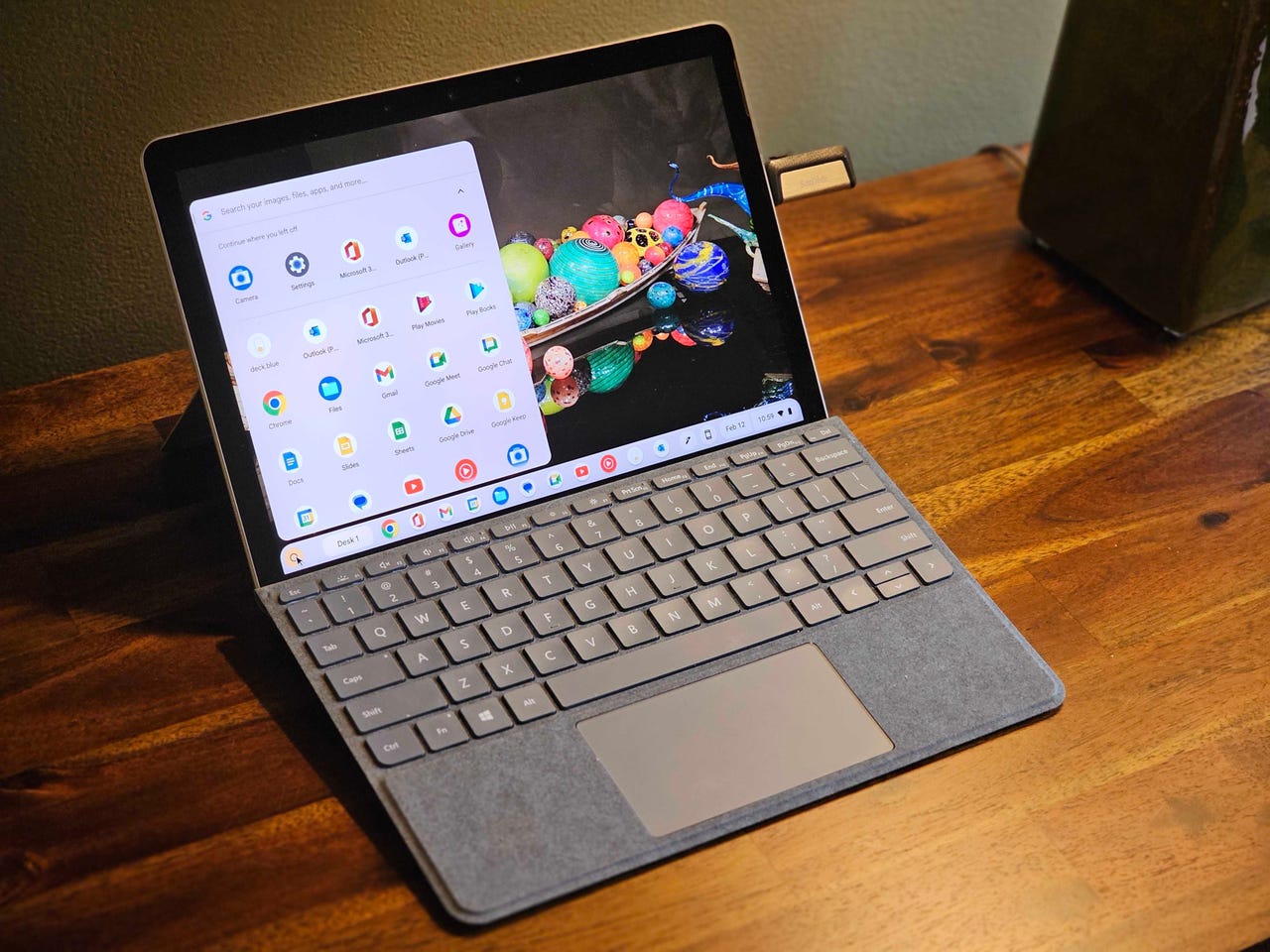Installing ChromeOS Flex? 5 things you need to do first to avoid headaches

Deadlines have a way of sneaking up on you. If you've got an old PC running Windows 10, the deadline you have to keep in mind is the end-of-support date for that operating system: October 14, 2025.
Unless you're willing to pay Microsoft, that's the day your old PC will stop receiving security updates. And because it's old, it also doesn't qualify to upgrade to Windows 11 (although there are ways around that).
Also: How to screen record in Windows 10 or Windows 11
For some of those senior PCs that still have some useful life left, one option is to change operating systems. My ZDNET colleague Jason Perlow raved about his success reviving three ancient computers with ChromeOS Flex, and after testing it I agree that, for some use cases, it's an excellent (and free!) alternative.
Do not assume, however, that because Google's OS is lightweight and free you can make the switch without headaches. I am here to testify: Yes, there are headaches.
Let me get the true confession out of the way first: I did not do my homework before I attempted to install ChromeOS Flex for the first time. Mr. Perlow hadn't flagged any issues with his installations, so this should be a piece of cake, right?
I have been in this business for many years, long enough to know the answer to that question. No, it wasn't easy. But many of the issues I ran into were easily preventable, had I just done a bit of research before diving in.
Also: The best laptops: Expert tested and reviewed
Today, I come to share my experiences and advise you on how to avoid making the same mistakes I did.
But let's begin with a little background.
What is ChromeOS Flex, and what is it good for?
You can think of ChromeOS Flex as Linux Ultra Light. It's very similar to the OS that powers Chromebooks, with some significant differences (most notably the absence of an app store). It's engineered to install as a replacement on old, Intel-powered computers that were originally built to run Windows or OS X or MacOS
The ChromeOS Flex interface, shown below, has all the bits you would expect from a modern operating system. There's a home button on the lower left, which you can click to open a menu of app shortcuts. Along the bottom of the display is a bar with more shortcuts to apps and pinned files, and there's a region on the lower right where you can click to pop up a display of system settings. If that seems familiar, well ... that's the point, isn't it? When you switch, most of your navigation skills transfer fairly quickly.
The ChromeOS Flex interface contains plenty of familiar navigation elements
On devices where you can detach the keyboard, ChromeOS Flex does a pretty nifty job of switching into a touch-first tablet mode.
When you detach the keyboard, ChromeOS Flex shifts into this tablet mode
As I mentioned earlier, there's no app store with ChromeOS Flex, so you're limited to the built-in Google apps and anything that will run in a browser. That's easy if your life is already organized in Google's ecosystem, of course, but it also works surprisingly well with Microsoft 365 apps. The key is installing Outlook, Word, and the rest as Progressive Web Apps (PWAs).
Also: I turned my laptop into a desktop PC and I've never been more productive
I tested ChromeOS Flex on a Microsoft Surface Go 2 with an Intel Core m3 processor, and it performed its core tasks just fine as long as I didn't let it go to sleep. But if I ignored the system for long enough, it tried to enter sleep mode, which caused it to crash. The only way to recover was with a hard reboot. I was able to work around the crashes by instructing the system to stay awake when I closed the Type Cover and to shut off the display but not sleep after inactivity. Needless to say, that resulted in pretty unimpressive battery life.
There were other issues too. For instance, neither of the built-in cameras (front- or rear-facing) worked, which made this machine incapable of handling even the simplest videoconference. The touchpad occasionally stopped working as well, but resumed normal function after being detached and then reattached.
Ultimately, I was able to use this device long enough to appreciate its potential, but its incurable insomnia made it unusable as a mobile device.
And I would have known that if I had just done my homework. That was my first and biggest mistake.
1. Don't ignore the documentation
If you've got an old PC or Mac and you're thinking of installing ChromeOS Flex on it, don't do anything until you check Google's official ChromeOS Flex Certified models list.
Also: This botched migration shows why you need to deal with legacy tech
The list is organized by manufacturer and model number and is easy to navigate. Devices that have been tested and certified to work without issues get a green checkmark. Each model also gets an End of Support date that's worth checking. It doesn't make much sense to replace Windows 10 with a release of ChromeOS Flex that's also set to end support in 2025 or earlier. According to Google, "After the Certified until date passes, some devices might still continue to receive updates. However updates might have issues, and are not guaranteed."
There's a fairly long list of features that aren't supported on ChromeOS Flex, including CD/DVD drives, fingerprint readers and face recognition cameras, stylus and active pen input, and Thunderbolt functionality. For the full list of features that are guaranteed to work, see this page: "About ChromeOS Flex certified models."
There's an entire page of known issues, too. Under the "Unsupported hardware" section, it points out that "Mac devices with Touch Bar, T2 security chip, or M1 processor are unsupported and likely to have major bugs even if they work." In fact, any Mac or Windows PC with an Arm-based processor is out of luck.
And this paragraph should have stopped me cold:
Unless listed as a certified model, Microsoft Surface products are unsupported and likely to have issues with keyboards, touchpads, touchscreens, and webcams.
Only two Surface models are Certified to work with ChromeOS Flex: The Surface Laptop SE, an ultra-cheap 2022 model aimed at the education market, and the 10-year-old Surface Pro 3.
Other stuff you need to know
After spending a few days repeatedly installing ChromeOS Flex, wiping the system, restoring Windows, and then reinstalling ChromeOS Flex, I have a few additional lessons to pass along:
2. Use Google Chrome to create the installer
To create a bootable USB installer for ChromeOS Flex, you need to install the Chromebook Recovery Utility extension from the Chrome web store. Even though this extension will install and appear to be available in a Chrome-compatible browser like Microsoft Edge, it won't work. Use Google Chrome.
Ignore the list of specific manufacturers and models. For manufacturer, choose Google ChromeOS Flex, and for product, select ChromeOS Flex.
3. Disconnect everything before you install
If you have an SD or Micro SD card inserted, remove it. Also remove any USB devices that aren't absolutely necessary. I had a slew of baffling errors until I realized that a Micro SD card was stuck in a hidden slot. Ideally, only your system drive will be available for the ChromeOS Flex installer.
4. Learn how your hardware's boot settings work
Every PC has its own way of forcing the device to boot from removable media. On a PC that's already running Windows 10/11, I've found that the simplest way to boot from the ChromeOS Flex USB installer is as follows:
- Go to Settings > System > Recovery > Advanced Startup.
- Select Restart now.
- At the Windows Recovery Environment menu, choose Use a device.
- Choose the Linpus lite option.
If you just want to kick the tires, you can run ChromeOS Flex from the USB drive. But for a real test, choose the option to install ChromeOS Flex, which will wipe your existing drive and all data on it
5. Have a backup plan in case things go wrong
Replacing your operating system wipes out everything on the system drive, so make sure you've backed up your data files before getting started. I made a Windows recovery drive and a system image of my Windows PC before trying any of this. As a result, I was able to restore my system to its previous state after my experiment had run its course. If you decide ChromeOS Flex isn't for you, your other option is to simply reinstall your current version of Windows.
Good luck!
